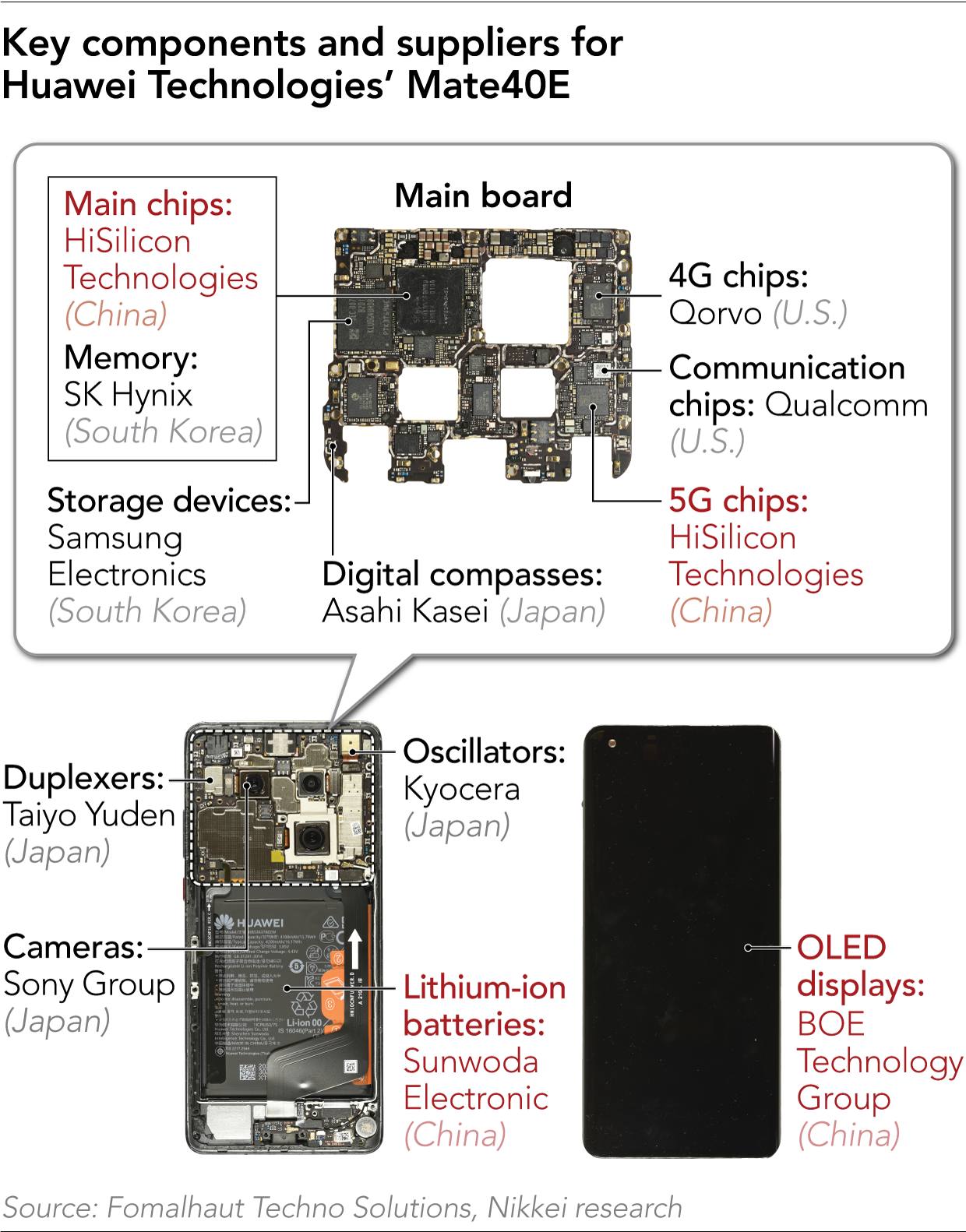Huawei Technologies has sharply increased the use of parts made in China in its latest smartphone as US sanctions banning American companies from selling to the Chinese telecommunications group continue.
Nikkei, together with Tokyo-based research specialist Fomalhaut Techno Solutions, took apart Huawei’s Mate 40E, which is compatible with fifth-generation networks, and found that Chinese-made parts account for roughly 60% of the total value of components—twice as much as the Mate 30, the previous model.
Huawei remains reliant for some key semiconductors on US-made chips it has in stock. That vulnerability makes it likely that the company will fall even further behind rivals as time passes.
Samsung captured the biggest share of the global smartphone market in the first half of 2021, according to International Data Corporation, a US company. Huawei ranked second but has since crashed out of the top five rankings.
The Mate 40E was released in China in March. Nikkei and Fomalhaut identified the origin of each component to make their analysis.

Fomalhaut estimated the manufacturing cost of the Mate 40E to be USD 367—virtually the same as the Mate 30, which went on the market in September 2019. The value of Chinese components was 56.6% in the Mate 40E, up from 30.0% previously.
The increase is mostly attributable to an organic electroluminescence display made by China’s BOE Technology Group that replaces a display from Samsung Electronics. The component accounts for nearly 30% of the overall value of the smartphone.
“Although BOE lags two years or so behind Samsung in technology, Huawei is actively increasing the use of BOE-made parts to compete with Samsung in the smartphone market,” said Yoshio Tamura, president of Asian Operations at Display Supply Chain Consultants, a US research company told Nikkei.
Huawei used to have no option but to use Qualcomm chips as the “brain” of its smartphones. The teardown found the performance of the Kirin 990E chip—designed by Huawei subsidiary HiSilicon and manufactured by Taiwan Semiconductor Manufacturing Co.—equivalent to similar American chips. It was also used in the Mate 30.
HiSilicon is also the source of the Mate 40E’s antenna switch—a communications chip—as well as one of the power control chips. Other Chinese components include the fingerprint sensor and battery.
Fomalhaut Director Minatake Kashio said the teardown confirmed “further advances in self-production and procurement of homemade components” that Huawei embarked upon prior to the US sanctions.
In early 2019, President Donald Trump’s administration banned Huawei from conducting business with American companies. In the autumn of 2020, the US added an effective ban on the supply of semiconductors that used US technology to the Chinese company. Huawei’s smartphone business continues to struggle under the administration of President Joe Biden, which has kept up the pressure.
Huawei has been shifting its procurement onshore as it runs down its US inventory. American parts accounted for just 5.2% of the total value of the Mate 40E, but that was actually up from 2.6% in the Mate 30. There are six kinds of US semiconductors in the new model compared to two in the old one.
The teardown found no American components compatible with 5G networks. But the Mate 40E has Qualcomm chips for core functions, such as processing communication ciphers. The device also contains a 4G semiconductor from Qorvo, a US manufacturer. Kashio believes Huawei “possibly used US-made chips it had procured and accumulated before the sanctions.”
This article first appeared on Nikkei Asia. It’s republished here as part of 36Kr’s ongoing partnership with Nikkei.
